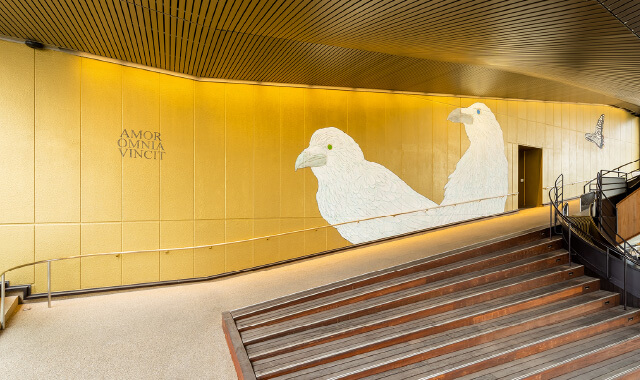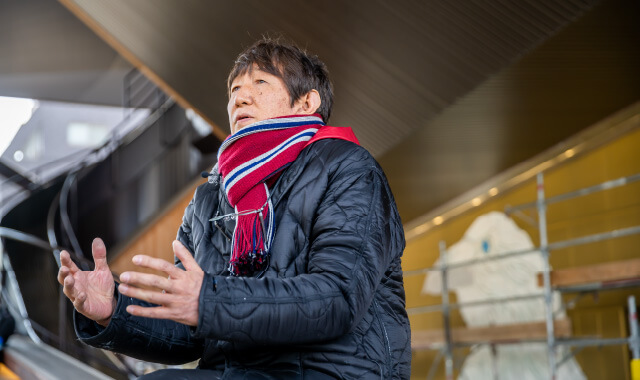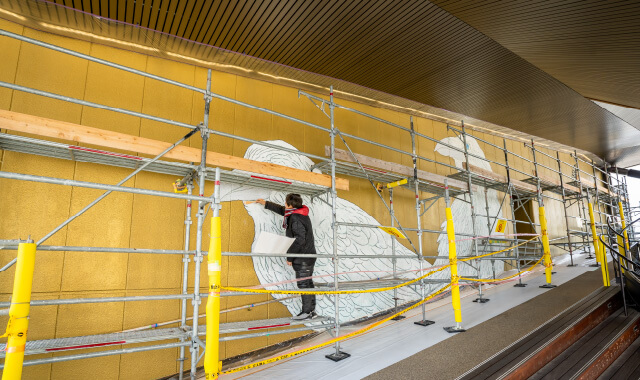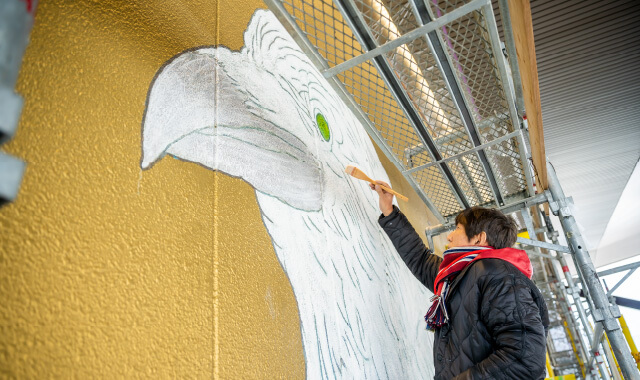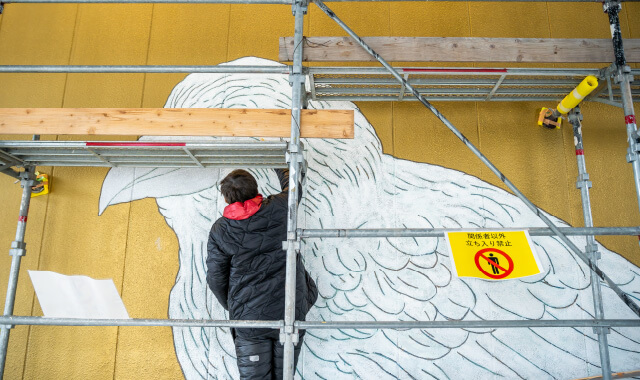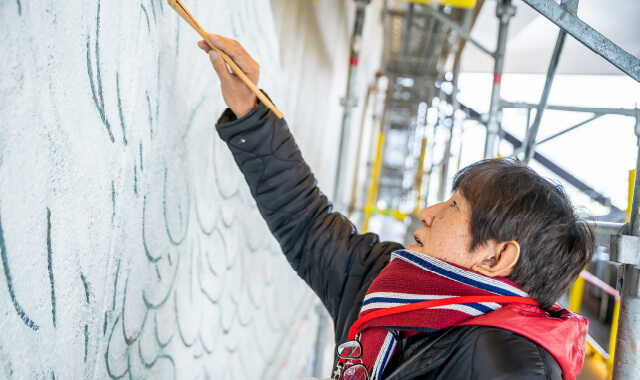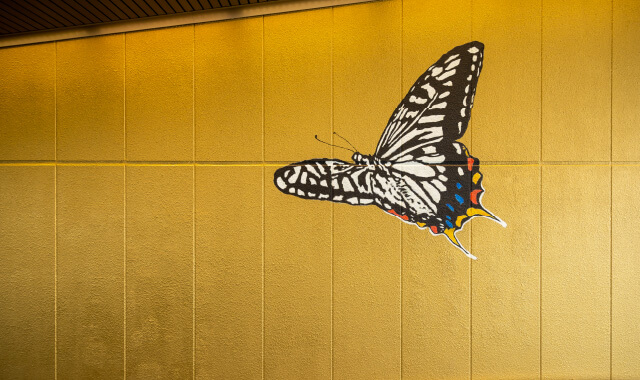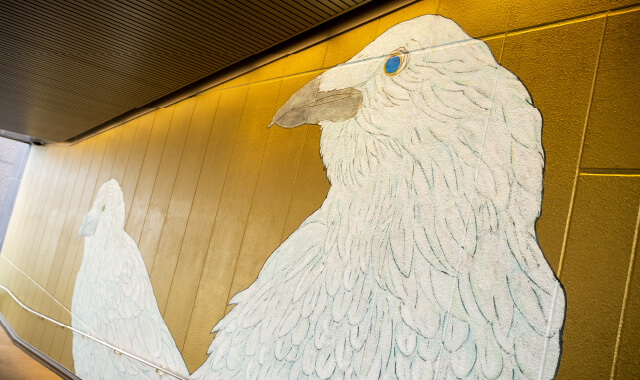Artist in charge of the 3rd tier of SPIRAL SLOPE
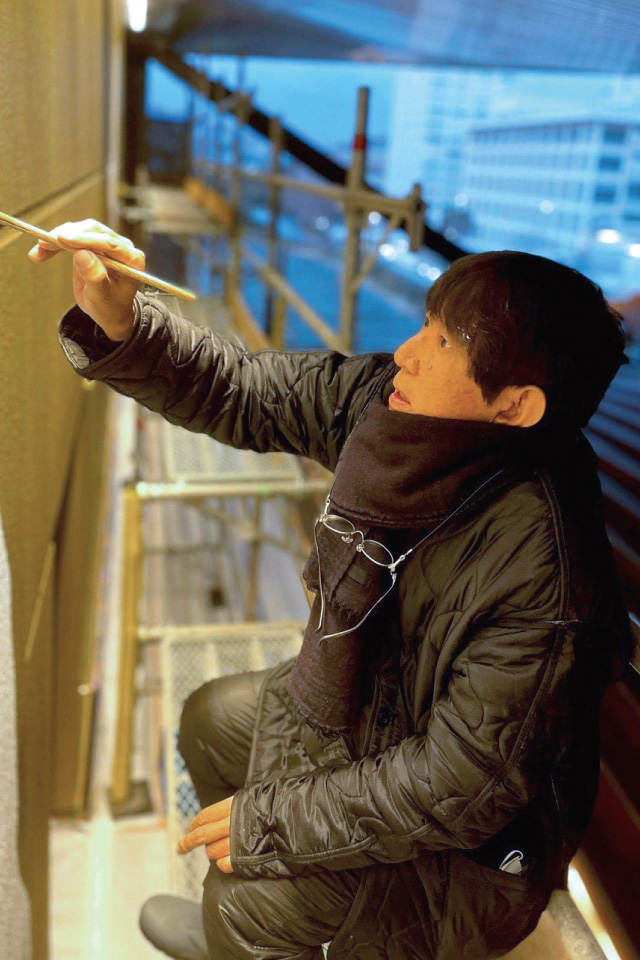
MIMASU MASANORI
1960-
Concept
Title: White Crow
On the wall of slope there are painted from right to left: A Gifu butterfly (Luehdorfia Japonica), piloting us toward the future; on the center door, a white butterfly as innocent and pure beauty; and two white crows with a Latin phrase signifying “If there is love, any difficulty can be overcome.”
The white crow is in general said to be an allegory of impossibility, and the reason why this time crows have been painted in white is because I wanted to convey the change of my viewpoint or sense of value about the “new future” as opposed to the “impossible future” as the change from the existing view of black crow to the future view of white crow as “the new prayer for the possible peace”. The present-day peaceful Hiroshima exists thanks to the unparalleled experience of the Atomic Bomb endured by our ancestors, and to “the powerfulness and hardness” “having enabled them to recuperate from and overcome the ruins”. Such a scene of recovery was unfathomable then. The two big crows looking at the future vigorously face towards the hypocenter and symbolize the people (They could be parent and child, brothers or sisters, husband and wife, etc.) opening the way to the future.
I would like to send to the future advancing toward 2045 the prayers and wishes unique to Hiroshima like dreams, hopes, peace, comfort, etc.
Profile
Currently engaged in activities of expression themed on “Japanese Modern”
Figaro Prize of France-Japan Multinational Contemporary Art Exhibition 1992;
Grand Prize of Open competition of Hiroshima City Museum of Modern Art “Art of Hiroshima” 1994;
Prize candidate at 24th Japanese Modern Art Exhibition 1995
During the period from 1999 to 2001, he implemented throughout the country the “White Chair Project” in which he lined up about 2000 chairs on each site.
In 2011, he produced paintings on sliding paper doors and hanging scrolls in tea ceremony houses.
Since then, such pieces have been developed in many temples, shrines and tea houses including, Daitoku-ji (Kyoto) and Jodo-ji (Onomichi).



